Echinodorus latifolius
Scientific name: Echinodorus latifolius
Family: Alismataceae
Maximum size reached under cultivation: 10 - 15 cm (3.94 - 5.91 inch)
014
Recommended pH range: 6.5 - 7.4
Recommended water hardness: 4 - 12°dGH (71.43 - 214.29ppm)
0°C 32°F30°C 86°F
Recommended temperature range: 22 - 27 °C (71.6 - 80.6°F)
Preferred propagation method: Runners
Native to: South America
Growth rate: Fast
Recommended substrate: Fine gravel
Lighting requirements: Bright
Ideal placement in tank: Foreground
Family
Alismataceae
Common Name
Dwarf Sword
Propagation
Echinodorus latifolius, commonly known as Dwarf Sword, reproduces by sending out runners across the substrate. New plantlets develop along these runners, each growing its own root system. Once the plantlets are well-established, they can either remain attached to the runner or be separated and replanted elsewhere in the aquarium. Ensure the substrate is nutrient-rich, as this supports strong root development and healthy propagation. Over time, this process allows the plant to spread and create a dense carpet of green in the foreground of the tank.
Difficulty
Easy. Echinodorus latifolius is a hardy and beginner-friendly plant that requires minimal maintenance. It adapts well to a range of water conditions and grows quickly when provided with proper lighting and nutrients.
Short Description
Native to South America, Echinodorus latifolius, also known as Dwarf Sword, is a fast-growing aquatic plant that is ideal for the foreground of aquariums. Reaching a height of 10 - 15 cm (3.94 - 5.91 inches), this plant forms a lush green carpet when planted in groups, providing a vibrant contrast to other plants in the tank. It thrives under bright lighting and nutrient-rich substrates, making it an excellent choice for aquascapers looking to create a low-growing, dense carpet of greenery.
Interestingly, the leaf shape of this plant changes depending on whether it is grown emersed or submerged. Emersed leaves are rounder and broader, while fully submerged leaves are slimmer and longer. This adaptive characteristic makes it a versatile plant for both aquariums and paludariums. In an aquarium setting, the plant’s submerged leaves will create a fine-textured, grass-like appearance, adding depth to the aquascape.
Though Echinodorus latifolius is a fast grower, it is relatively easy to control. If left unchecked, the runners will allow it to spread rapidly. You can manage its growth by trimming the runners or planting it in pots or among rocks to restrict its spread. When first introduced to an aquarium, some outer leaves may decay as the plant adjusts to its new environment. This is normal. It’s best to remove these decaying leaves and trim the roots before planting to encourage healthy new growth.
Maintenance and Care
Echinodorus latifolius thrives in a pH range of 6.5 to 7.4 and can tolerate water hardness from 4 to 12°N (71.43 - 214.29 ppm). The ideal temperature range is between 22 - 27°C (71.6 - 80.6°F). For optimal growth, bright lighting is necessary, as low light conditions may cause the plant to become leggy or sparse. It prefers fine gravel as a substrate, which allows the runners to spread easily, creating a full carpet effect. Providing CO₂ supplementation and using liquid fertilizers can enhance its growth, although the plant can grow well even without these if nutrient levels are adequate.
To maintain its dense, lush appearance, regular trimming of the plant’s runners and leaves is recommended. Ensure that any decaying leaves are promptly removed to prevent them from affecting water quality. If signs of nutrient deficiency appear, such as yellowing leaves or stunted growth, adding liquid fertilizers or root tabs can help restore the plant’s health. Due to its fast-growing nature, this plant is excellent for filling in empty spaces in the aquarium, but it’s important to monitor its spread if you want to maintain a specific layout.
Compatibility
This plant is compatible with a wide range of peaceful aquarium species, including small fish, shrimp, and fry. It provides excellent shelter and hiding spots for fry and smaller fish, helping to create a more secure environment for them. Additionally, the dense carpeting effect it creates can help reduce algae growth by absorbing excess nutrients from the water. However, it is best to avoid placing it in tanks with herbivorous fish that may nibble on its delicate leaves.
Submersion and Aquascaping
Fully submersible, Echinodorus latifolius is highly valued for its role in aquascaping, particularly as a foreground or carpeting plant. Its low-growing habit and bright green coloration make it an excellent choice for creating contrast in planted tanks. When grown in groups, it can quickly form a thick, lush carpet that adds depth and dimension to the aquascape. Its versatility also allows it to be used in paludariums, where it can grow both submerged and emersed.
Due to its fast growth rate and adaptability, Echinodorus latifolius is perfect for aquascaping styles like Iwagumi or nature-style tanks, where its fine leaves can complement rock and hardscape elements. This plant is a fantastic option for aquarists looking to create vibrant, low-maintenance foregrounds in their tanks.

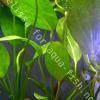 Echinodorus “Ozelot”
Echinodorus “Ozelot”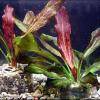 Echinodorus “Red Flame”
Echinodorus “Red Flame”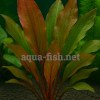 Echinodorus “Red Special”
Echinodorus “Red Special”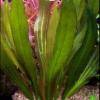 Echinodorus “Rubin”
Echinodorus “Rubin”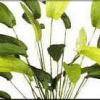 Echinodorus “Tricolour”
Echinodorus “Tricolour”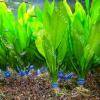 Echinodorus amazonicus
Echinodorus amazonicus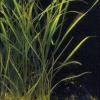 Echinodorus angustifolius
Echinodorus angustifolius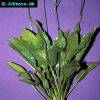 Echinodorus bleheri
Echinodorus bleheri Echinodorus cordifolius
Echinodorus cordifolius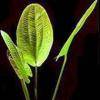 Echinodorus grandiflorus
Echinodorus grandiflorus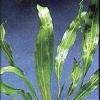 Echinodorus horemanii
Echinodorus horemanii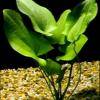 Echinodorus macrophyllus
Echinodorus macrophyllus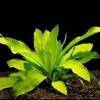 Echinodorus major
Echinodorus major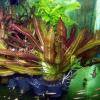 Echinodorus osiris
Echinodorus osiris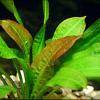 Echinodorus parviflorus
Echinodorus parviflorus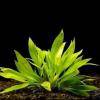 Echinodorus quadricostatus
Echinodorus quadricostatus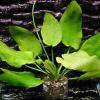 Echinodorus schlueteri
Echinodorus schlueteri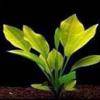 Echinodorus subalatus
Echinodorus subalatus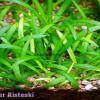 Echinodorus tenellus
Echinodorus tenellus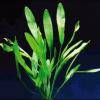 Echinodorus uruguayensis
Echinodorus uruguayensis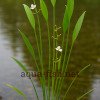 Sagittaria graminea
Sagittaria graminea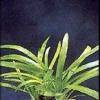 Sagittaria platyphylla
Sagittaria platyphylla Sagittaria subulata
Sagittaria subulata